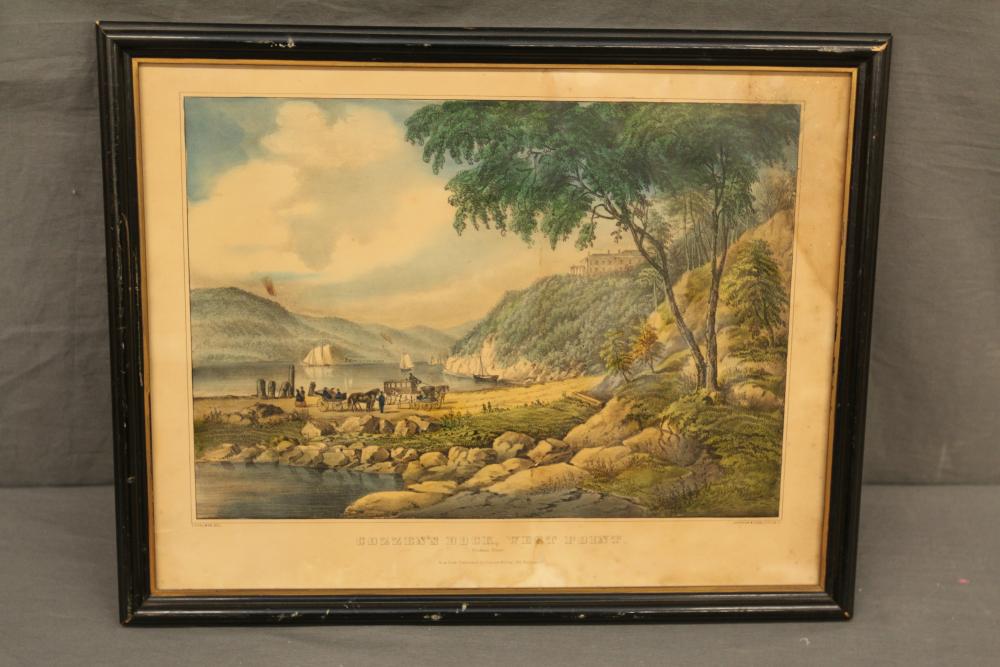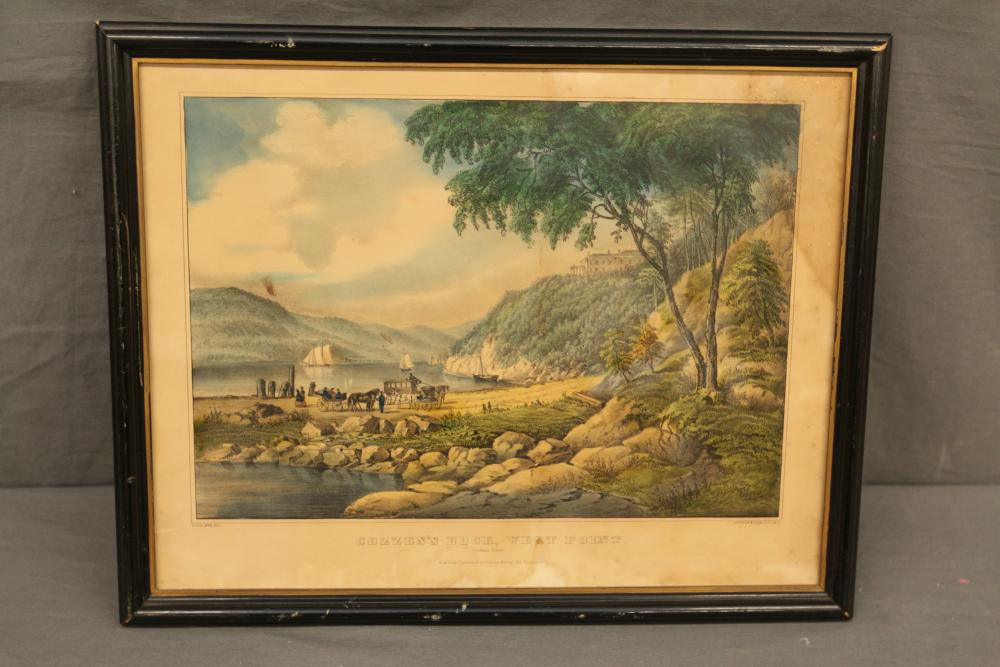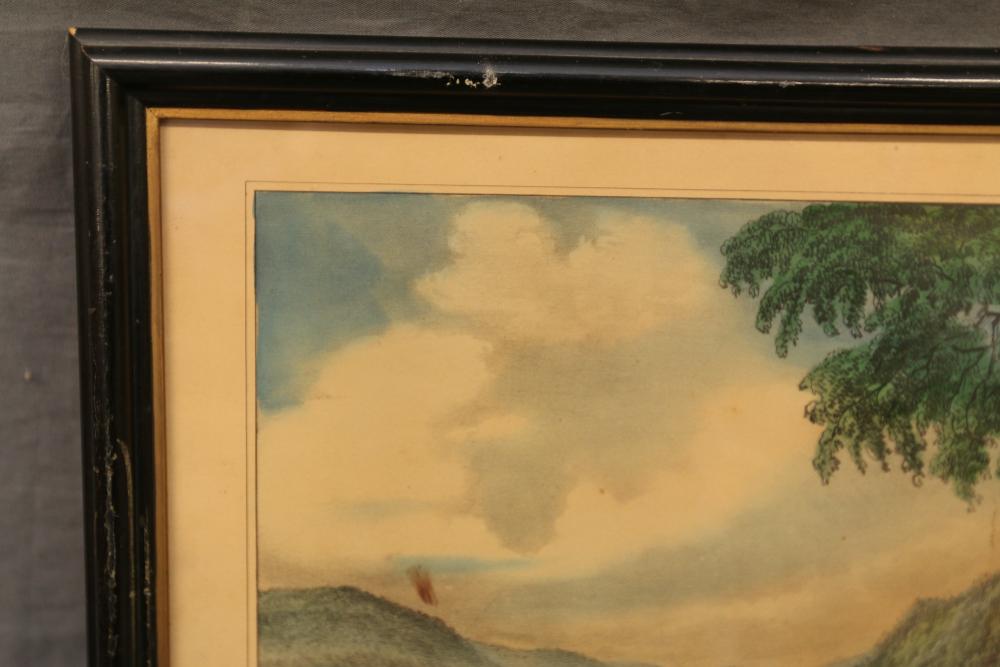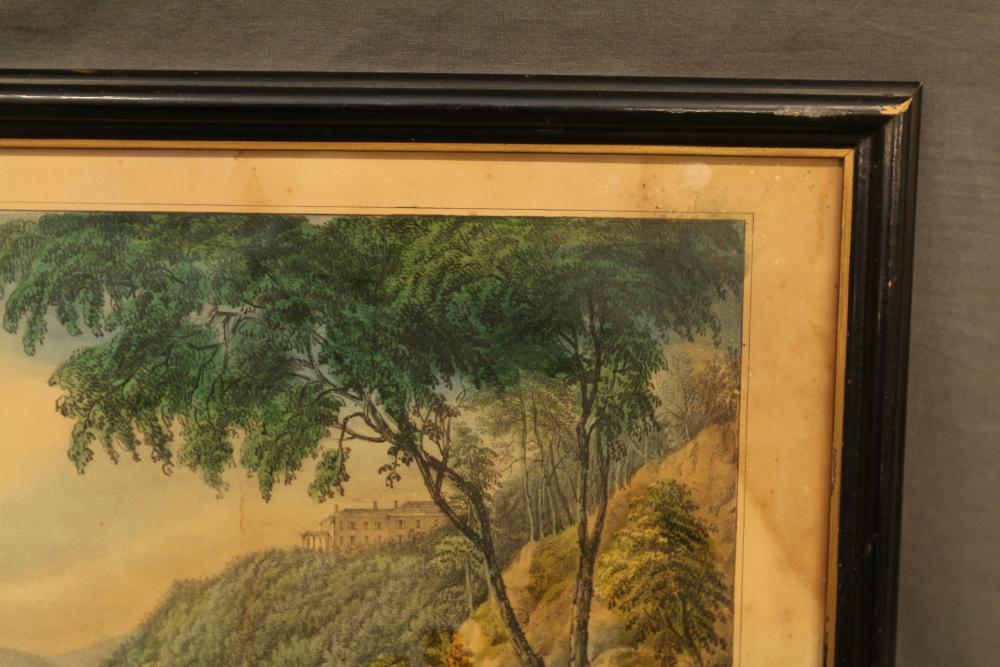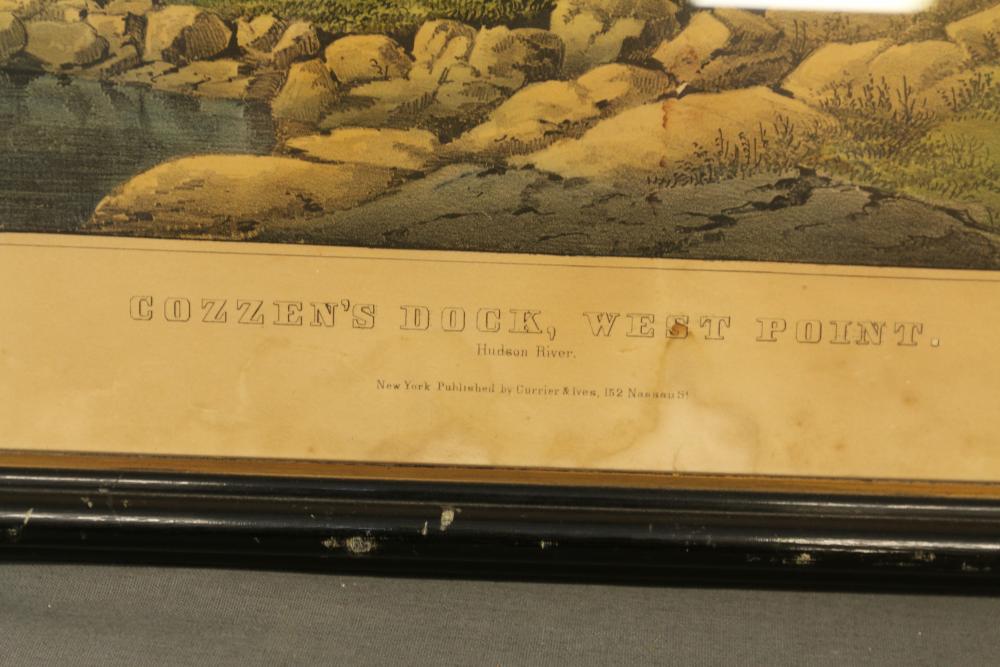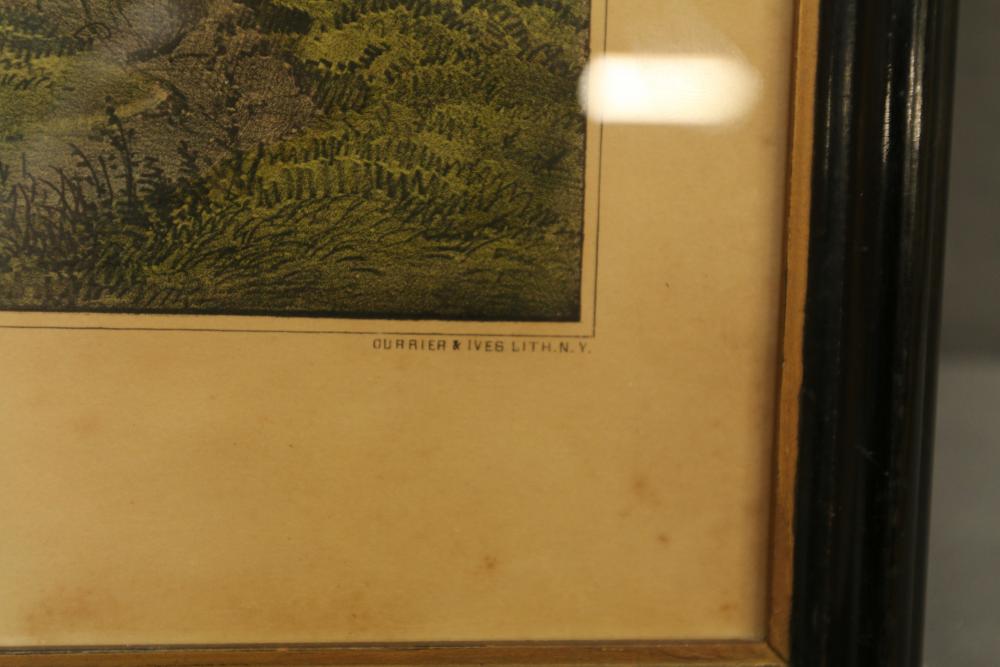Auctioneer's Note: The first American School of Art is known as ''The Hudson River School,'' consisting of mid-nineteenth century ''Nature Painters'' who found spirituality in nature. These adventuresome artists hiked to see impressive views. They sketched and did studies in the field to bring back to their studios where they would create the finished paintings. The Hudson River served as the main route of travel to the best places, as well as provided the best subject matter. New York City, with the National Academy of Design to exhibit at, was the center of the American Arts world in the 19thC. Now you can bid on 69 lots of paintings and prints, mostly related to the Hudson Valley. Today, with an emphasis on conservation of resources, and going ''Green,''it is the best time to purchase and enjoy these beautiful works. Bidding is online, with the opportunity to preview at the Absolute Auction Center. Every lot starts at $1.00 and sells to the highest bidder. Good luck! - Rob Doyle. Items located in Pleasant Valley, NY.
Payment is due by Thursday, February 27 at 1PM.
Pickup in Pleasant Valley, NY must be completed by Thursday, February 27 at 3PM.
All lots sold as is, where is. There is a 15% Buyers Premium for all lots purchased. Payment methods for non-vehicles & non-equipment include cash, MC, Visa, Discover or good check. Payment method for vehicles & equipment is cash, cashiers check, money order or wire transfer only, no exceptions. You can make credit card payment online by going to "My Account" and selecting your invoice.
Preview available Monday-Friday 9am-3pm by appointment only or online 24 hours. Use this link to get directions to the Absolute Auction Center: http://mapq.st/1wgg9jz
** NOTE: Shipping is available on all items with proper identification.**
Click More Info/Bid Now for additional photos.
Payment is due by Thursday, February 27 at 1PM.
Pickup in Pleasant Valley, NY must be completed by Thursday, February 27 at 3PM.
All lots sold as is, where is. There is a 15% Buyers Premium for all lots purchased. Payment methods for non-vehicles & non-equipment include cash, MC, Visa, Discover or good check. Payment method for vehicles & equipment is cash, cashiers check, money order or wire transfer only, no exceptions. You can make credit card payment online by going to "My Account" and selecting your invoice.
Preview available Monday-Friday 9am-3pm by appointment only or online 24 hours. Use this link to get directions to the Absolute Auction Center: http://mapq.st/1wgg9jz
** NOTE: Shipping is available on all items with proper identification.**
Click More Info/Bid Now for additional photos.
Auction Info
Auctioneer's Note: The first American School of Art is known as ''The Hudson River School,'' consisting of mid-nineteenth century ''Nature Painters'' who found spirituality in nature. These adventuresome artists hiked to see impressive views. They sketched and did studies in the field to bring back to their studios where they would create the finished paintings. The Hudson River served as the main route of travel to the best places, as well as provided the best subject matter. New York City, with the National Academy of Design to exhibit at, was the center of the American Arts world in the 19thC. Now you can bid on 69 lots of paintings and prints, mostly related to the Hudson Valley. Today, with an emphasis on conservation of resources, and going ''Green,''it is the best time to purchase and enjoy these beautiful works. Bidding is online, with the opportunity to preview at the Absolute Auction Center. Every lot starts at $1.00 and sells to the highest bidder. Good luck! - Rob Doyle. Items located in Pleasant Valley, NY.
Payment is due by Thursday, February 27 at 1PM.
Pickup in Pleasant Valley, NY must be completed by Thursday, February 27 at 3PM.
All lots sold as is, where is. There is a 15% Buyers Premium for all lots purchased. Payment methods for non-vehicles & non-equipment include cash, MC, Visa, Discover or good check. Payment method for vehicles & equipment is cash, cashiers check, money order or wire transfer only, no exceptions. You can make credit card payment online by going to "My Account" and selecting your invoice.
Preview available Monday-Friday 9am-3pm by appointment only or online 24 hours. Use this link to get directions to the Absolute Auction Center: http://mapq.st/1wgg9jz
** NOTE: Shipping is available on all items with proper identification.**
Click More Info/Bid Now for additional photos.
Payment is due by Thursday, February 27 at 1PM.
Pickup in Pleasant Valley, NY must be completed by Thursday, February 27 at 3PM.
All lots sold as is, where is. There is a 15% Buyers Premium for all lots purchased. Payment methods for non-vehicles & non-equipment include cash, MC, Visa, Discover or good check. Payment method for vehicles & equipment is cash, cashiers check, money order or wire transfer only, no exceptions. You can make credit card payment online by going to "My Account" and selecting your invoice.
Preview available Monday-Friday 9am-3pm by appointment only or online 24 hours. Use this link to get directions to the Absolute Auction Center: http://mapq.st/1wgg9jz
** NOTE: Shipping is available on all items with proper identification.**
Click More Info/Bid Now for additional photos.
Categories:
AskArt Bio: Frances (''Fanny'') Flora Bond Palmer (l812-1876) was one of the premier artists for Currier & Ives, the most famous publishers of lithographic prints in mid-nineteenth century America. She is generally regarded as the leading American woman lithographer of her time.
Born in Leicester, England, the daughter of an attorney, she received an excellent education at a school for girls in Leicester, run by Mary Linwood (herself a well-known stitchery artist). After marrying Edmund Seymour Palmer in l832 and bearing a daughter and son, she and her husband opened a lithography business in Leicester around l842 under the company name ''F. & S. Palmer''. Fanny was the principal artist and lithographer, and Edmund was primarily the printer, although he may have done some lithography as well.
The Palmers immigrated to the United States late in l843, settling in New York City, where they continued to produce a great variety of lithographs for other publishers, as well as in their own name. Around l849, after they moved to Brooklyn, Nathaniel Currier hired Mrs. Palmer as a staff artist and Mr. Palmer dropped out of the business. He died in l857 from a fall downstairs, attributed by colleagues and friends to alcoholism. From that time forward Fanny remained the principal support of her children, granddaughter and sister Maria Bond.
''F. F. Palmer'' became one of the most prolific artists at Currier & Ives, producing more than two-hundred prints portraying a wide range of subjects, including farm and suburban scenes, sporting and marine prints, still life, literary subjects, panoramic views of steamboats, railroad trains, the Civil War, and the westward movement.
A large body of work bearing her name was entirely original; drawn or painted and lithographed by her as well. In some cases they were signed ''from nature and on stone'', indicating that they were taken directly from on-site sketches. However, lithography was a commercial operation and the versatile artist, adept at every aspect of her trade, was assigned a varying role. Sometimes she originated the drawing or painting and other lithographers transferred it onto stone. At other times she lithographed or adapted the work of other artists and printmakers. In those cases the original artist's name was usually indicated on the print, and she was listed as ''F. F. Palmer, lith.''.
As in film, television and advertising today, lithography was often a collaborative effort, and Palmer provided backgrounds and landscapes to which other artists at the company added the figures. Currier's partner, James Ives, seems to have played a role in the conception or lithographing of some of her later prints; his name appears on them along with hers.
Fanny Palmer's prints were, and still remain, among the most popular images issued by Currier & Ives. In her day they hung on the walls of thousands of homes and businesses, and have been reproduced on calendars, cards and prints ever since. Some have become national icons, embodying the dreams and aspirations of the expanding young United States.
More Details
AskArt Bio: Frances (''Fanny'') Flora Bond Palmer (l812-1876) was one of the premier artists for Currier & Ives, the most famous publishers of lithographic prints in mid-nineteenth century America. She is generally regarded as the leading American woman lithographer of her time.
Born in Leicester, England, the daughter of an attorney, she received an excellent education at a school for girls in Leicester, run by Mary Linwood (herself a well-known stitchery artist). After marrying Edmund Seymour Palmer in l832 and bearing a daughter and son, she and her husband opened a lithography business in Leicester around l842 under the company name ''F. & S. Palmer''. Fanny was the principal artist and lithographer, and Edmund was primarily the printer, although he may have done some lithography as well.
The Palmers immigrated to the United States late in l843, settling in New York City, where they continued to produce a great variety of lithographs for other publishers, as well as in their own name. Around l849, after they moved to Brooklyn, Nathaniel Currier hired Mrs. Palmer as a staff artist and Mr. Palmer dropped out of the business. He died in l857 from a fall downstairs, attributed by colleagues and friends to alcoholism. From that time forward Fanny remained the principal support of her children, granddaughter and sister Maria Bond.
''F. F. Palmer'' became one of the most prolific artists at Currier & Ives, producing more than two-hundred prints portraying a wide range of subjects, including farm and suburban scenes, sporting and marine prints, still life, literary subjects, panoramic views of steamboats, railroad trains, the Civil War, and the westward movement.
A large body of work bearing her name was entirely original; drawn or painted and lithographed by her as well. In some cases they were signed ''from nature and on stone'', indicating that they were taken directly from on-site sketches. However, lithography was a commercial operation and the versatile artist, adept at every aspect of her trade, was assigned a varying role. Sometimes she originated the drawing or painting and other lithographers transferred it onto stone. At other times she lithographed or adapted the work of other artists and printmakers. In those cases the original artist's name was usually indicated on the print, and she was listed as ''F. F. Palmer, lith.''.
As in film, television and advertising today, lithography was often a collaborative effort, and Palmer provided backgrounds and landscapes to which other artists at the company added the figures. Currier's partner, James Ives, seems to have played a role in the conception or lithographing of some of her later prints; his name appears on them along with hers.
Fanny Palmer's prints were, and still remain, among the most popular images issued by Currier & Ives. In her day they hung on the walls of thousands of homes and businesses, and have been reproduced on calendars, cards and prints ever since. Some have become national icons, embodying the dreams and aspirations of the expanding young United States.
High Bid:
$45.00 – mccartm7
Auction Type: One Lot
Quantity: 1
Bidding has closed on this lot

